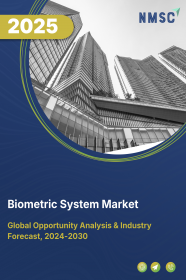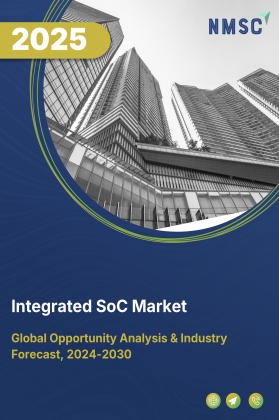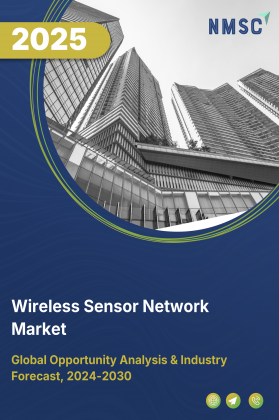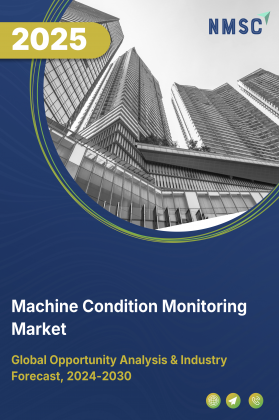
Biometric System Market by Component (Hardware, Software, and Service), by Authentication Type (Single Factor Authentication and Multi Factor Authentication, and Behavioral Biometrics,), by Mobility (Fixed Biometric Systems and Portable/Mobile Biometric Systems), by Technology (Contact-Based, Contactless, and Others), by Application (Identity Verification and Others), and by End-User (Government and Defense, BFSI, and Others) – Global Opportunity Analysis and Industry Forecast, 2025–2030
Biometric System Industry Overview
The global Biometric System Market size was valued at USD 43.25 billion in 2024, and is expected to be valued at USD 48.91 billion by the end of 2025. The industry is projected to grow further, hitting USD 90.66 billion by 2030, with a CAGR of 13.1% between 2025 and 2030.
The biometric system market has seen robust growth due to a combination of rising security concerns, government initiatives, and technological advancements such as AI, ML, and cloud computing. These systems, which leverage unique biological traits for identity verification, are increasingly being adopted across various industries to combat security breaches and fraud. As the world becomes more digital, the need for secure authentication methods continues to rise. Additionally, governments worldwide are actively driving the adoption of biometric solutions, while continuous innovations are enhancing the capabilities of these systems, making them more accessible and reliable. However, the market also faces challenges such as accuracy issues, and the need for more diverse applications. Despite these hurdles, the market presents significant opportunities for expansion and innovation, particularly in sectors like banking, healthcare, and retail.
Rising Security Concerns Driving Biometric System Market Demand
Heightened global security concerns are a key driver behind the rapid growth of the market. In an era of digital transformation, identity fraud and security breaches are critical threats that affect individuals, organizations, and governments. Biometric systems provide highly accurate, tamper-resistant identity verification using unique biological traits, making them far more secure than traditional passwords. The growing number of connected devices, with an expected increase from 15.1 billion in 2021 to 23 billion by 2025, amplifies the need for robust cybersecurity. Financial institutions, for example, are leveraging biometrics to combat fraud and reduce reliance on passwords, signalling a long-term market trend.
Government Initiatives Shaping Biometric System Growth Potential
Governments across the globe are increasingly adopting facial recognition systems to enhance security and streamline administrative processes. Large-scale government programs, such as India’s Aadhaar and China’s CRIC, serve as prime examples of how national initiatives are fueling market demand. These programs aim to enhance national security, prevent identity fraud, and simplify access to services. As governments become major stakeholders in biometric systems, businesses must align their solutions with national security and identity verification initiatives to capitalize on this growing demand. With the global logistics market expected to grow by 115.3% by 2030, secure digital identity systems will play a vital role in managing supply chains and international mobility.
Technological Advancements in AI, Machine Learning, and Cloud Computing Fueling Biometric System Industry Growth
Technological innovations in biometric sensors, machine learning, and cloud computing are driving the biometric system market growth. These advancements improve the accuracy, speed, and scalability of biometric systems, making them more accessible and effective across various sectors. Machine learning and artificial intelligence (AI) are enhancing system efficiency by reducing errors and improving spoofing detection. A recent hybrid iris recognition system combined with AI achieved a 99.5% recognition rate, demonstrating how technology is pushing the boundaries of biometric capabilities. Companies that incorporate cutting-edge AI-driven biometric systems, such as Tencent Cloud’s palm vein scanner, are poised to lead the market. However, the high upfront cost of implementation restraints the growth of the market as small and medium sized enterprises are cost conscious and thereby, limits the widespread adoption.
Accuracy and Reliability Challenges Hinders the Expansion of the Market
Biometric systems must overcome accuracy and reliability challenges in real-world conditions. Environmental factors like dirty or wet fingers can affect sensor performance, and threats such as spoofing—using synthetic fingerprints or facial replicas—pose additional risks. To address these challenges, companies need to invest in improving sensor technology, AI-powered algorithms, and anti-spoofing measures. Establishing biometric quality standards and improving image acquisition techniques will help enhance system reliability and reduce the likelihood of errors.
Expanding Applications and Integration of 3D Technology Creates Ample Growth Opportunities for Biometric Systems
The industry offers vast growth potential as its applications expand beyond traditional security into new sectors such as banking, healthcare, gaming, logistics, and retail. Innovations like IDloop’s 3D contactless fingerprint scanner, designed for high-traffic environments like airports, demonstrate the increasing versatility of identity verification systems. Furthermore, advancements in AI and imaging technologies have enabled non-contact health diagnostics, offering the potential to detect early signs of conditions like hypertension or diabetes. As biometrics evolve from basic authentication tools into more advanced roles, the market stands to benefit from significant opportunities for investment and innovation.
Market Segmentations and Scope of the Study
The biometric system market report is segmented on the basis of component, authentication type, mobility, technology, application, end user, and region. On the basis of component, the market is divided into hardware, software, and services. Hardware is further divided into sensors, cameras, scanners and readers, microphones, and smart card readers. Software is further divided into biometric authentication software, data analytics and processing software, middleware, and cloud-based biometric platforms. Services is further divided into consulting and advisory services, implementation and integration services, and support and maintenance services. Based on authentication type, the market is categorized into single-factor authentication, multi-factor authentication, and behavioral biometrics. Single-factor authentication includes fingerprint recognition, iris recognition, face recognition, voice recognition, palm print recognition, vein recognition, and signature recognition. Multi-factor authentication is further divided into multimodal biometrics and hybrid biometrics. Behavioral biometrics is further divided into keystroke dynamics, gait analysis, and voice pattern analysis. On the basis of mobility, the market is segmented into fixed biometric systems and portable/mobile biometric systems. By technology, the market is categorized into contact-based biometrics, contactless biometrics, hybrid biometrics, AI-enhanced biometrics, and others. Based on application, the market is segmented into identity verification, access control, payment authentication, surveillance and security, and others. On the basis of end user, the market is segmented into government and defense, banking, financial services, and insurance (BFSI), healthcare, retail and e-commerce, travel and hospitality, automotive, and others. Regional analysis covers North America, Europe, Asia-Pacific, and Rest of the World (RoW).
Geographical Analysis
North America maintains its leadership position in the biometric system market share, driven by strong adoption across government, law enforcement, and healthcare sectors. The region shows high integration of Automated Fingerprint Identification Systems (AFIS), with the United States leading in deployment for criminal investigations and secure identity verification. According to the Federal Bureau of Investigation (FBI), over 880,000 cybercrime cases were reported in the U.S. in 2023, resulting in losses of approximately USD 12.5 billion, accelerating the demand for stronger digital authentication systems. Companies like Aware, HID Global, and Crossmatch Technologies are advancing their offerings to meet growing requirements for fraud prevention and access security. Airports, banks, and medical institutions are increasingly utilizing fingerprint and facial recognition to streamline services. This focus on public safety, digital trust, and operational efficiency continues to drive sustained growth in the region.
Europe stands as the second-largest market, driven by widespread adoption of biometric systems for border control, immigration, and digital identity verification. Countries including the UK, France, and Germany are implementing advanced AFIS and facial recognition systems to strengthen national security and streamline public services. Biometric use in banking is also increasing, improving user authentication and reducing fraud in mobile transactions. Companies such as IDEMIA and Suprema Inc. are active across Europe, developing contactless, AI-powered authentication systems in response to growing privacy concerns and EU regulatory frameworks. The emphasis on anti-spoofing, interoperability, and compliance supports the adoption of liveness detection technologies, ensuring secure and user-friendly operations. These efforts align with the European Union’s focus on privacy-conscious digital solutions, contributing to the region’s rising market share.
The Asia-Pacific region is experiencing the fastest growth in the market trends, supported by widespread government initiatives and expanding applications in banking, healthcare, and transportation. Major programs such as India’s Aadhaar and China’s CRIC are driving the adoption of AFIS and facial recognition at national scale. As per the World Economic Forum, the logistics sector in the region stood at USD 1.9 trillion in 2023 and is projected to grow to USD 4.17 trillion by 2030, highlighting rising demand for secure access across supply chains. In September 2024, NEC Corporation introduced a high-speed facial recognition system in Japan, designed to authenticate up to 100 individuals per minute and issue real-time alerts for unauthorized access attempts. This, along with the presence of companies like Fujitsu Limited and Hitachi, reinforces the region’s technological momentum. According to the Ministry of Commerce and Industry, India’s hospital market was valued at USD 98.98 billion in 2023 and is expected to reach USD 193.59 billion by 2032, supporting the use of biometric authentication in healthcare settings and strengthening APAC’s contribution to global market growth.
The Rest of the World, encompassing Latin America, the Middle East, and Africa, is witnessing steady progress in biometric adoption across public services and industrial sectors. These regions are exploring mobile and contactless biometric technologies to enhance digital inclusion, especially in areas with limited infrastructure. According to local governmental and institutional programs, efforts are underway to integrate biometrics in healthcare, education, and national identification systems. Players like M2SYS Technology, Papilon Savunma, and BioID are introducing tailored, cost-effective solutions for these markets. Although overall maturity remains lower than in more developed regions, rising awareness, digital transformation, and international collaboration are steadily expanding market access, contributing to the global adoption of secure biometric systems.
Key Innovations and Strategic Moves by Leading Players in the Global Biometric Systems Market
The global biometric systems industry is highly competitive, with leading players driving innovation in secure, contactless, and efficient authentication solutions to meet surging demand across finance, government, healthcare, and retail sectors. Companies are deploying strategies like product launches, strategic partnerships, and geographic expansions to solidify their market dominance, overcoming challenges such as high implementation costs and privacy concerns while propelling market growth.
IDEX Biometrics, for instance, partnered with KONA I in October 2023 to launch biometric payment cards globally, using recycled PVC and metal to meet premium customer demand, and further collaborated with Cellfie Global in November 2024 to scale production for banks and fintechs in the U.S., Europe, and Asia. IDEMIA advanced identity verification with the March 2023 launch of OneLook Gen2, capturing face and iris data remotely for border control and smart boarding, and MorphoWave TP, enabling simultaneous ten-fingerprint scanning with a single wave for streamlined access control.
Fingerprint Cards AB partnered with Thales in March 2024 to roll out biometric payment cards in Türkiye, supporting Garanti BBVA’s cashless initiatives, and introduced the T-Shape sensor module with IN Groupe in July 2024 for enhanced contactless payment security. Zwipe expanded its reach through a December 2021 partnership with Easy Pay in India, launching scalable biometric payment cards, while IDEX Biometrics secured Visa certification for its IDEX Pay platform in 2024, ensuring compliance for global commercialization. Thales Group, in 2025, launched a next-generation biometric authentication platform for enterprise applications, integrating multi-modal biometrics for enhanced security.
Despite challenges like system integration complexities and regulatory compliance, these innovations and strategic moves align with the growing demand for secure, contactless authentication, driving robust market expansion.
Key Benefits
-
The report provides quantitative analysis and estimations of the market from 2025 to 2030, which assists in identifying the prevailing market opportunities.
-
The study comprises a deep dive analysis of the market including the current and future trends to depict prevalent investment pockets in the market.
-
Information related to key drivers, restraints, and opportunities and their impact on the market is provided in the report.
-
Competitive analysis of the players, along with their market share is provided in the report.
-
SWOT analysis and Porters Five Forces model is elaborated in the study.
-
Value chain analysis in the market study provides a clear picture of roles of stakeholders.
Biometric System Market Key Segments
By Component
-
Hardware
-
Sensors
-
Cameras
-
Scanners and Readers
-
Microphones
-
Smart Card Readers
-
-
Software
-
Biometric Authentication Software
-
Data Analytics and Processing Software
-
Middleware
-
Cloud-Based Biometric Platforms
-
-
Service
-
Consulting and Advisory Services
-
Implementation and Integration Services
-
Support and Maintenance Services
-
By Authentication Type
-
Single Factor Authentication
-
Fingerprint Recognition
-
Iris Recognition
-
Face Recognition
-
Voice Recognition
-
Palm Print Recognition
-
Vein Recognition
-
Signature Recognition
-
-
Multi Factor Authentication
-
Multimodal Biometrics
-
Hybrid Biometrics
-
-
Behavioral Biometrics
-
Keystroke Dynamics
-
Gait Analysis
-
Voice Pattern Analysis
-
By Mobility
-
Fixed Biometric Systems
-
Portable/Mobile Biometric Systems
By Technology
-
Contact-Based Biometrics
-
Contactless Biometrics
-
Hybrid Biometrics
-
AI-Enhanced Biometrics
-
Others
By Application
-
Identity Verification
-
Access Control
-
Payment Authentication
-
Surveillance and Security
-
Others
By End-User
-
Government and Defense
-
BFSI
-
Healthcare
-
Retail and E-Commerce
-
Travel and Hospitality
-
Automotive
-
Others
By Region
-
North America
-
The U.S.
-
Canada
-
Mexico
-
-
Europe
-
The UK
-
Germany
-
France
-
Italy
-
Spain
-
Denmark
-
Netherlands
-
Finland
-
Sweden
-
Norway
-
Russia
-
Rest of Europe
-
-
Asia-Pacific
-
China
-
Japan
-
India
-
South Korea
-
Australia
-
Indonesia
-
Singapore
-
Taiwan
-
Thailand
-
Rest of Asia Pacific
-
-
RoW
-
Latin America
-
Middle East
-
Africa
-
Key Players
-
NEC Corporation
-
Thales S.A.
-
Precise Biometrics
-
Daon, Inc.
-
BIO-key International
-
Fujitsu Limited
-
Cognitec Systems GmbH
-
IDEMIA
-
Iris ID, Inc.
-
IDEX Biometrics ASA
-
Innovatrics
-
Realtime Biometrics
-
NEXT Biometrics
-
BioID
-
Integrated Biometrics
REPORT SCOPE AND SEGMENTATION
|
Parameters |
Details |
|
Market Size in 2024 |
USD 43.25 Billion |
|
Revenue Forecast in 2030 |
USD 90.66 Billion |
|
Growth Rate |
CAGR of 13.1% from 2025 to 2030 |
|
Analysis Period |
2024–2030 |
|
Base Year Considered |
2024 |
|
Forecast Period |
2025–2030 |
|
Market Size Estimation |
Billion (USD) |
|
Growth Factors |
|
|
Countries Covered |
28 |
|
Companies Profiled |
15 |
|
Market Share |
Available for 10 companies |
|
Customization Scope |
Free customization (equivalent up to 80 working hours of analysts) after purchase. Addition or alteration to country, regional, and segment scope. |
|
Pricing and Purchase Options |
Avail customized purchase options to meet your exact research needs. |

















 Speak to Our Analyst
Speak to Our Analyst

























